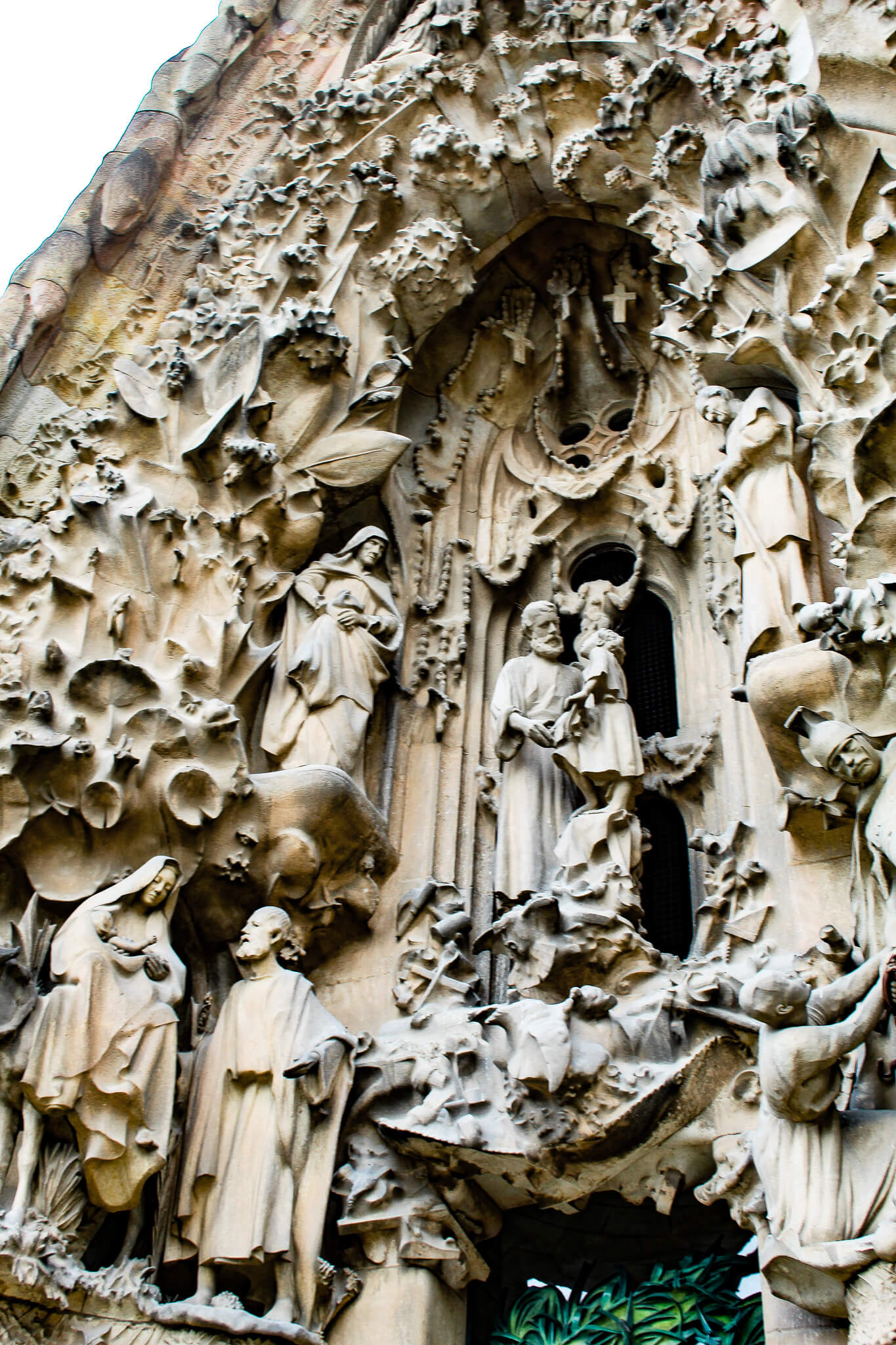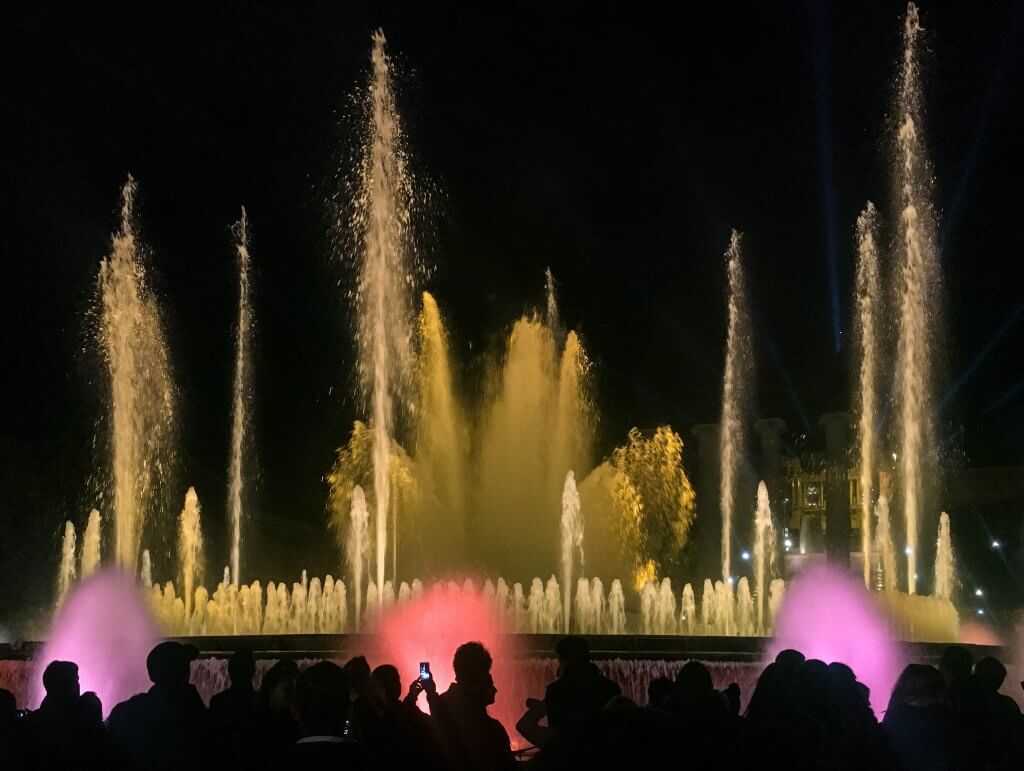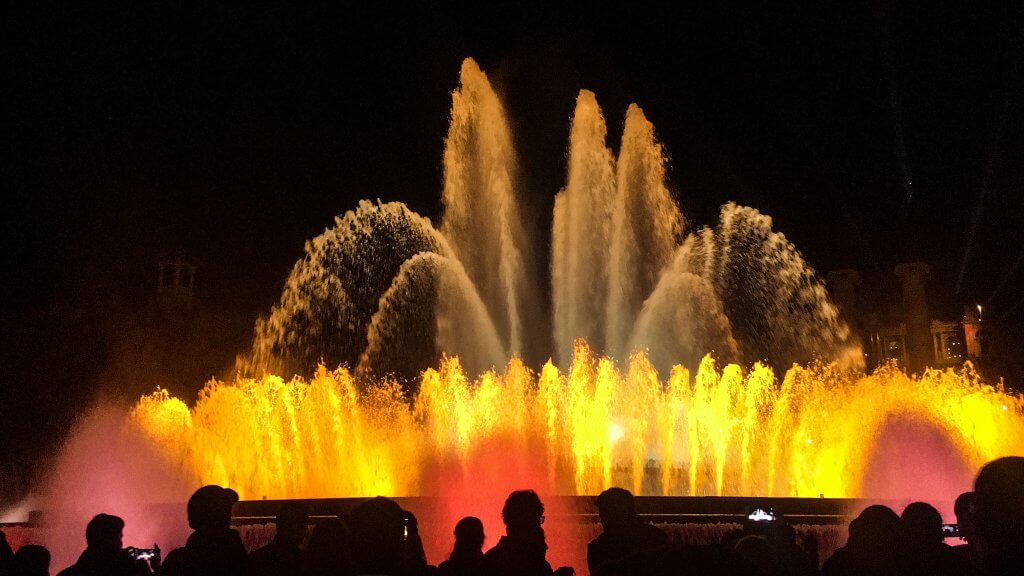Known for its architecture and art, Barcelona has become one of the most visited cities in Europe. The many landmarks around the city make it a top destination for sightseeing and getting that perfect Instagram shot. Foodies will enjoy sampling Spanish dishes and trying the local Catalan cuisine. There are also a variety of options for entertainment and nightlife. While you may have to fight your way through a crowd of tourists (I recommend visiting in the off-season when it’s not quite as busy as the summer months), you should still explore the amazing attractions that Barcelona has to offer.
Sagrada Familia
History
If you only visit one place in Barcelona, it should be La Sagrada Familia. This unfinished basilica has been under construction since 1882. Antoni Gaudí, a native Catalan, was named chief architect in 1883 and spent the remainder of his life devoted to the project. He knew that the church would not be completed during his lifetime, so he planned the construction in stages and left behind detailed models and drawings so that future architects could carry on with his design. When asked about the slow pace of the project, Gaudí, who was building the church for God, would respond, “My client is not in a hurry.” Gaudí was tragically struck and killed by a streetcar in 1926 when the basilica was less than 25% complete. He is now buried in Sagrada Familia’s underground crypt in the chapel of Our Lady of Mount Carmel.
Construction on Sagrada Familia continued to progress slowly over the next several decades and suffered many setbacks. During the Spanish Civil War, revolutionaries set fire to the crypt and partially destroyed Gaudí’s original plans, drawings and plaster models, which had to be pieced back together. In 2016, authorities discovered that Sagrada Familia had never obtained the proper building permit when construction began back in 1882. The basilica reached an agreement with the city in 2018 to make installment payments over the next 10 years to cover 136 years worth of fines (a total of €36 million), which will be used to improve transport and infrastructure around Barcelona. The basilica is now estimated to be finished in 2026, 100 years after Gaudí’s death.
Tickets
Sagrada Familia is not supported by any government or church, and relies on private donations and ticket sales to fund the construction. It is estimated that as many as 80% of tourists only take pictures of the exterior and do not go inside. It is well worth the entrance cost to get the full experience and see how Gaudí’s vision came to life. It is recommended that you purchase your tickets a few days in advance to secure your spot, especially for tours that include tower access which tend to sell out.
Façades
The three façades of the basilica depict the birth, death, and resurrection of Jesus. The Nativity façade, which was completed during Gaudí ‘s lifetime, is incredibly ornate, with intricate carvings depicting the birth of Christ and the beauty of God’s creation. The Passion façade, in contrast, is very austere with rigid lines and sharp angles to show the brutality of the crucifixion. The Glory façade, still under construction, will be the largest and most elaborate of the three. When the final tower of Jesus Christ is completed, Sagrada Familia will become the world’s tallest church, reaching a height of 170 meters, just below the height of nearby Montjuïc hill as Gaudí did not want his creation to be higher than God’s.

Interior
The interior columns were inspired by nature and branch out like trees to support the ceiling. Sunlight streams in through the stained glass windows, filling the church with a rainbow of colors. The cooler tones of the eastern facing windows cast rays of blue and green in the morning, while the warmer hues of the western windows shine through in the evening.




Park Güell
Gaudi’s other most famous work is Park Güell, a garden and public park built between 1900 and 1914. The park is filled with Dr. Seuss-like architecture covered in colorful mosaic tiles.












Gothic Quarter
The Barri Gòtic, or Gothic Quarter, is the oldest part of Barcelona with many buildings dating back to the Middle Ages. The Cathedral, built from the thirteenth to fifteenth century, is one of the main points of interest and you can see part of the old Roman wall that is still standing next to it.

El Pont del Bisbe is another popular sight in the Gothic Quarter, even though it was only built in 1928.

Tapas
Tapas bars are a great place to try out different foods. My favorite one is Tapas 24. It attracts a lot of tourists and can get very crowded during peak lunch/dinner hours, but the food is delicious and worth waiting for.

Magic Fountain
The fountain at the base of Montjuïc puts on a light and water show choreographed to music in the evenings. The show always draws an enthusiastic crowd and lasts around 20 minutes. Showtimes vary depending on the season, so check the schedule when planning your visit.
La Barceloneta
La Barceloneta is the most popular beach in Barcelona. During the day, it’s a nice spot to relax by the Mediterranean Sea. At night, it draws a party crowd to its beach clubs that stay open until 6am.


Picasso Museum
From 1895 to 1905, Pablo Picasso lived in Barcelona, where he spent his teenage years studying art and began his professional career as an artist. The museum displays more than 4000 pieces of his work.

La Pedrera
If you haven’t had enough Gaudí yet, you can find a few more of his buildings around Barcelona. One of the most iconic is the home he designed for the Milà family, popularly known as La Pedrera (stone quarry) due to its tiered stone exterior. You can save a little money and time if you purchase tickets online in advance.

The roof was my favorite part of the house, with it giant chimneys resembling medieval knights.



The Whale Attic gives you the feeling of being inside the skeleton of a whale as you walk through the 270 arches. This space also houses an exhibition devoted to Gaudí and his work.


The family lived on the main floor, which is now an art museum, and rented out the upper level apartments. On the fourth floor you can tour rooms containing furnishings and household items from the early 1900s to see how a family in Barcelona would have lived at that time.
Some links in this article may be affiliate links, which means that if you purchase through them, I receive a small commission at no extra cost to you, and in many cases you receive a special discount. Thanks for your support!
Like this post? Pin it!

















